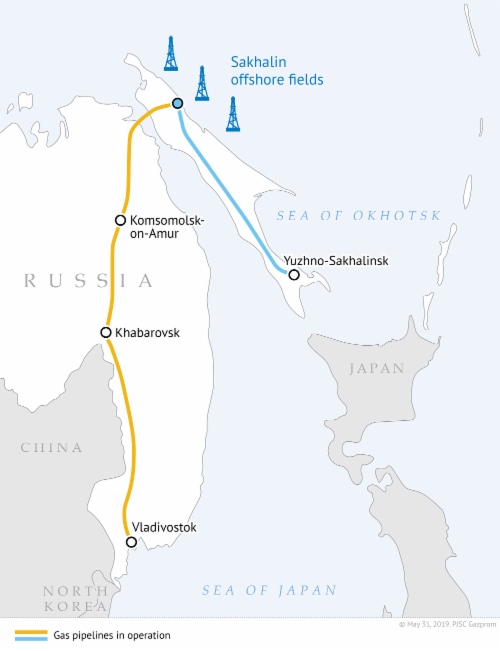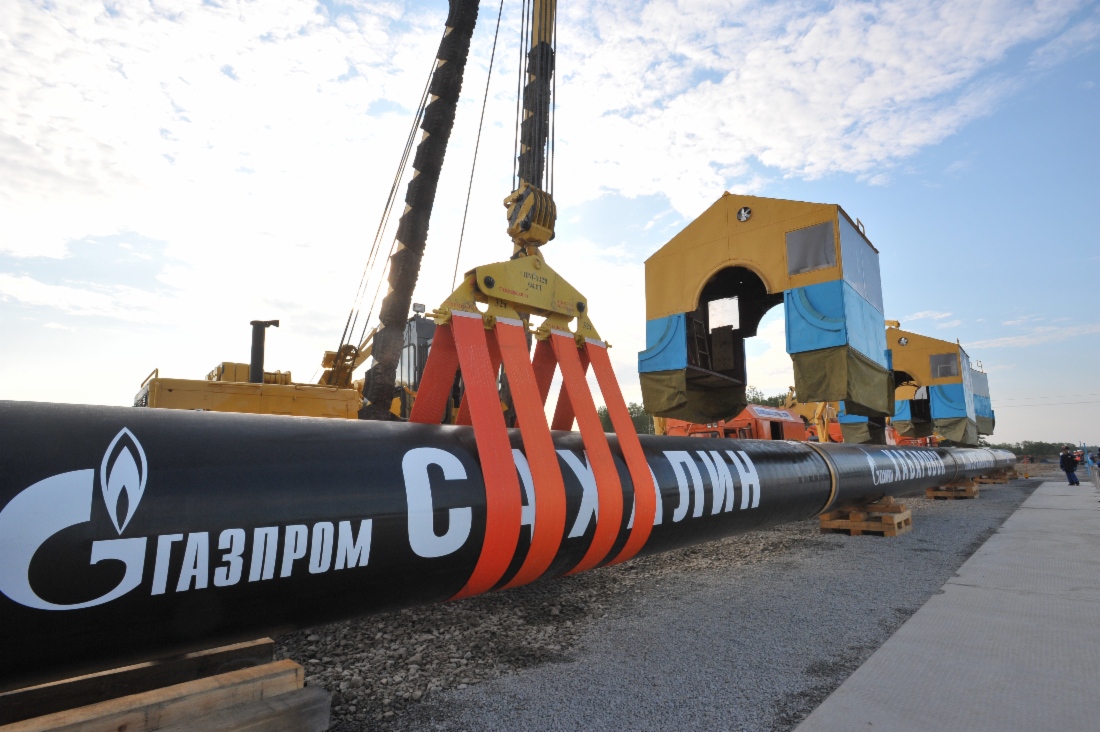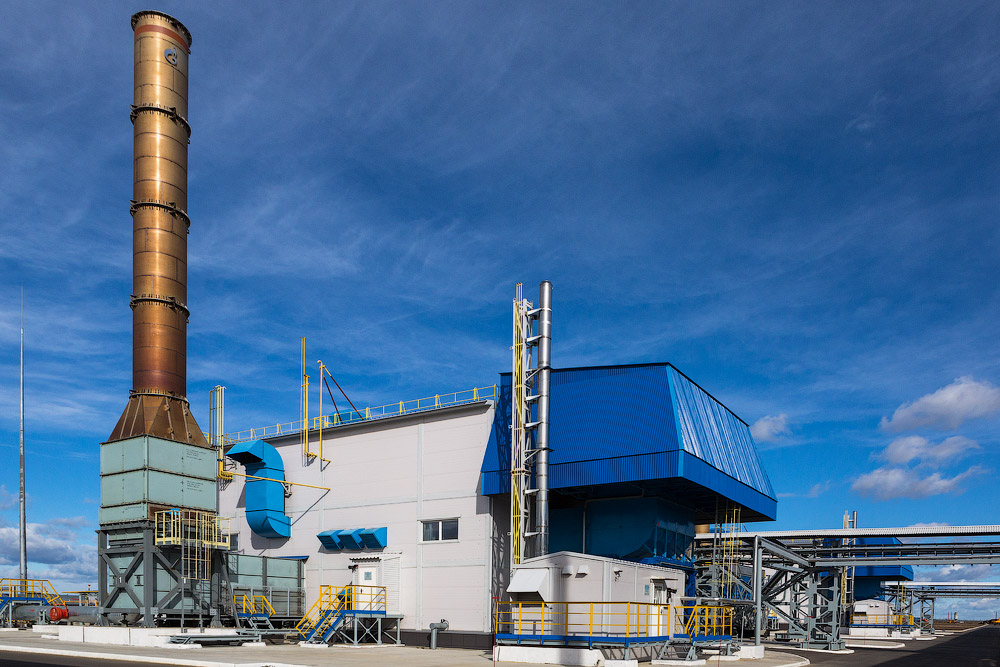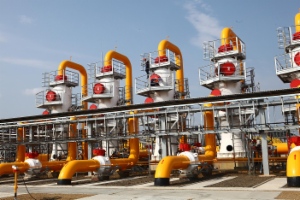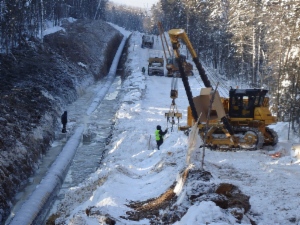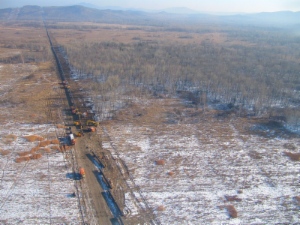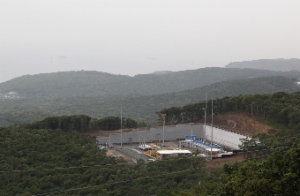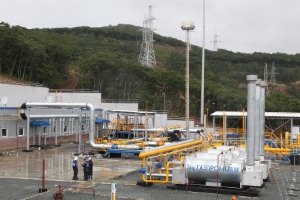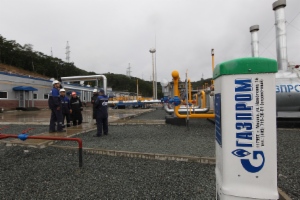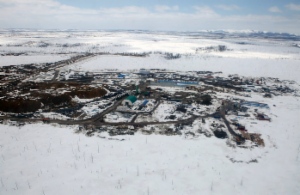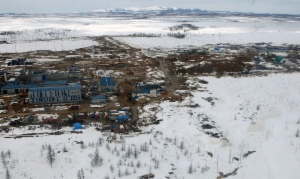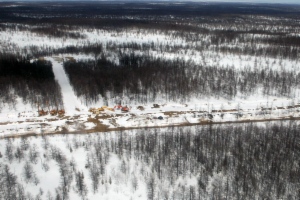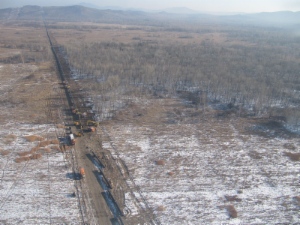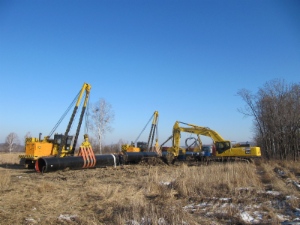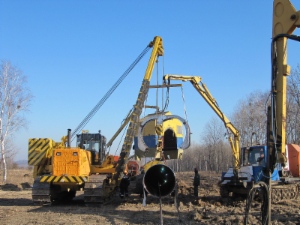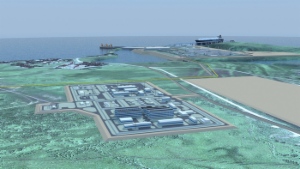The Sakhalin – Khabarovsk – Vladivostok gas transmission system (GTS) is the first interregional GTS in eastern Russia. The GTS is intended to deliver gas produced on the Sakhalin shelf to consumers in the Khabarovsk and Primorye Territories. The GTS created favorable conditions for expanding the gas grid coverage in the said territories and ensuring gas supplies to Asia-Pacific.

design capacity of the first start-up complex
design capacity of the first start-up complex
Strategy
Figures and facts
Length of the route: over 1,800 kilometers.
Base diameter of pipes: 1,220 millimeters.
Working pressure: 100 atm (9.8 MPa).
Annual design capacity of the first start-up complex: 5.5 billion cubic meters of gas.
The gas pipeline’s route traverses three Russian constituent entities: the Sakhalin Region and the Khabarovsk and Primorye Territories.
Development
This ambitious project was accomplished in record time. In 2008, Gazprom started to design the gas transmission system. Construction was launched in July 2009. In September 2011, the first start-up complex of the GTS was put onstream and natural gas began flowing to Vladivostok.
The core facilities of the start-up complex are the Sakhalin main compressor station (32 MW), the pipeline’s linear part connecting Sakhalin to Komsomolsk-on-Amur and Khabarovsk to Vladivostok (with a total length of around 1,350 kilometers), and a gas distribution station near Vladivostok. The GTS includes the Komsomolsk-on-Amur – Khabarovsk gas pipeline (700 millimeters in diameter, 472 kilometers in length).
In December 2021, the pipeline’s capacity within the section between Komsomolsk-on-Amur and Khabarovsk was increased.
Technologies
The GTS route runs through regions with challenging seismotectonic environments. In addition to the Nevelskoy Strait, the route has over 400 water crossings within the basins of the Amur and Ussuri Rivers. The most advanced technologies and equipment are employed to ensure a high level of safety and reliability across the GTS.
The most advanced technologies and equipment are employed to ensure a high level of safety and reliability across the Sakhalin – Khabarovsk – Vladivostok GTS. For instance, the newly-applied telemetry system provides for remote control over the linear part of the pipeline. The pipeline’s distant facilities are equipped with self-contained uninterruptible power systems. Moreover, a fiber-optic geotechnical monitoring system, currently in testing mode, is used to track pipeline performance in seismically active areas.
Gazprom constructed the gas pipeline using domestically produced pipes with internal flow coating – the pipe’s inner surface was covered with a special polymer reducing fluid friction, which resulted in a smaller pressure decline and made gas transmission more cost-effective. The main compressor station is outfitted with cutting-edge gas compressors that have magnetic-suspension centrifugal blowers running without lubrication.
As part of the Sakhalin – Khabarovsk – Vladivostok GTS project, an inter-settlement gas pipeline was constructed to connect the gas distribution station located in Vladivostok to Russky Island, with a pipeline branch to Vladivostok’s CHPP-2. The most technically challenging section of the gas pipeline – a two-string passage across the Eastern Bosphorus Strait – was built using the directional drilling method. At the time of construction, Gazprom set a precedent in Russia by building a passage of significant length (2.8 kilometers each string) and a considerable mine tunnel diameter (762 millimeters) in the extremely difficult geological environment (rocks).
Environmental protection
The Sakhalin – Khabarovsk – Vladivostok GTS has created the conditions for gas grid coverage expansion, social and economic development, and establishment of new large industrial enterprises in Russia’s Far East.
The gas pipeline is operated in compliance with the most stringent environmental standards. Besides, the transition of coal-fired power plants to natural gas significantly improved the environmental situation in the region’s population centers.


